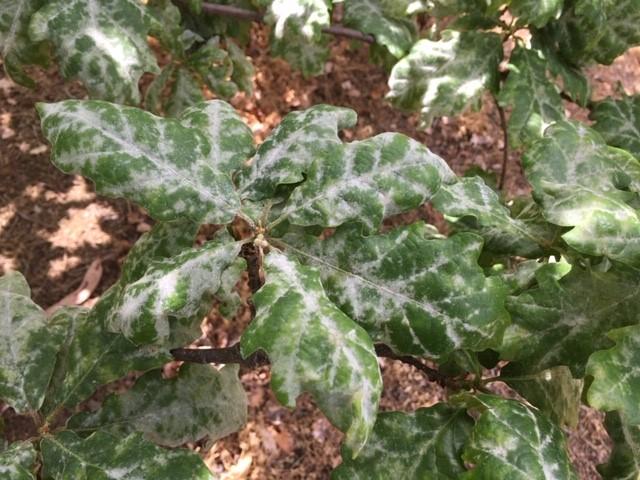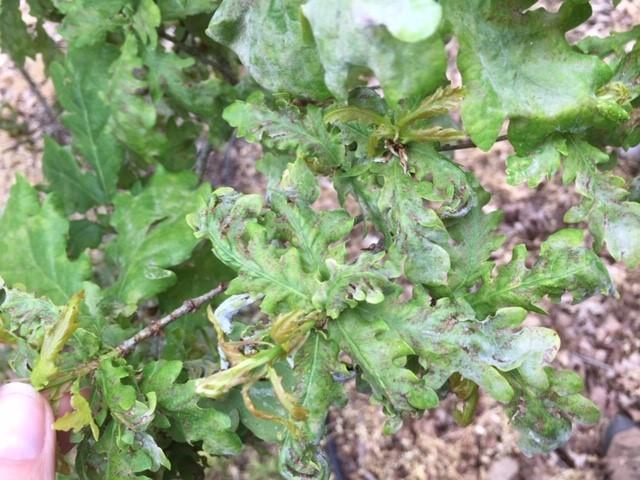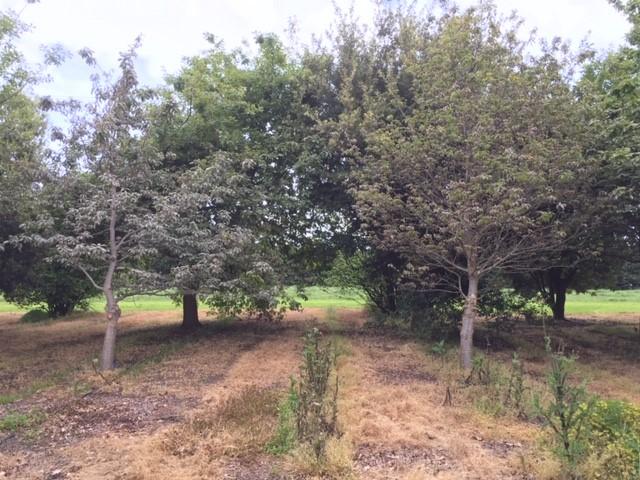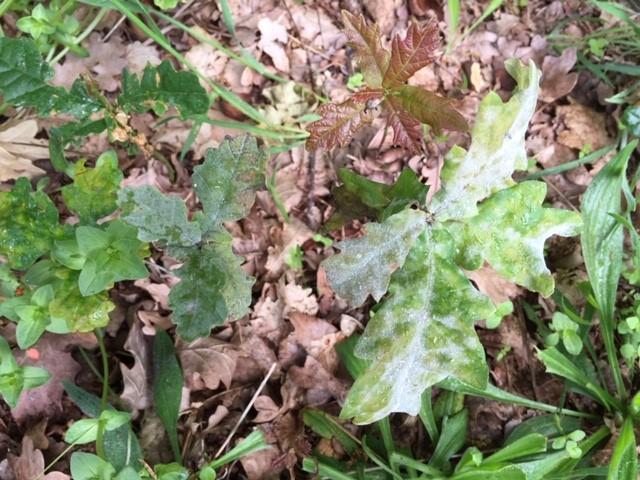Recent observations from WA disease survey
Project team member and plant pathologist Celeste Linde recently travelled to Western Australia to observe tree health and diseases in truffle orchards around the southwest.
It has been an exceptionally ‘good’ year for oak powdery mildew on Quercus robur (Figure 1). Multiple rain days in September and October provided the moisture needed for heavy powdery mildew infections. In the past we have advocated that powdery mildew infection is not of major concern for producing truffles, however such heavy infections were usually only evident at the end of the growing season or did not appear to significantly reduce the growth of the trees. The effect of these infections on truffle yield is unknown, but the early infections seen in 2018 could be detrimental to the health of the tree by providing avenues for other opportunistic fungi to infect. This in turn may severely reduce the photosynthetic ability of the trees (Figure 2) and cause more serious diseases such as diebacks. Any resulting tree death will obviously affect the truffle producing capacity of that orchard.


Traditional cultural practices to reduce powdery mildew infection includes providing adequate airflow in amongst trees. However, the ideal infection conditions of 2018 nullified this option as even orchards with adequate airflow showed heavy infections.
The observations this year raises the question of quality control in nursery seedlings. Within orchards, it is clear that there is a great degree of variation in the resistance of trees to infection with powdery mildew (Figure 3). Other horticultural and forestry industries have prioritised selection of seed stock for resistance to common or difficult to treat disease. This has not yet occurred in the Australian truffle industry. Inspecting a potential seed source for Q. robur in the south-west, it was quite evident that some trees are more resistant to infection than others are, with many seedlings showing powdery mildew infection, whilst others are relatively free of disease (Figure 4).


This is an area for further research in both oak and hazelnut species used as host trees for truffle production.
